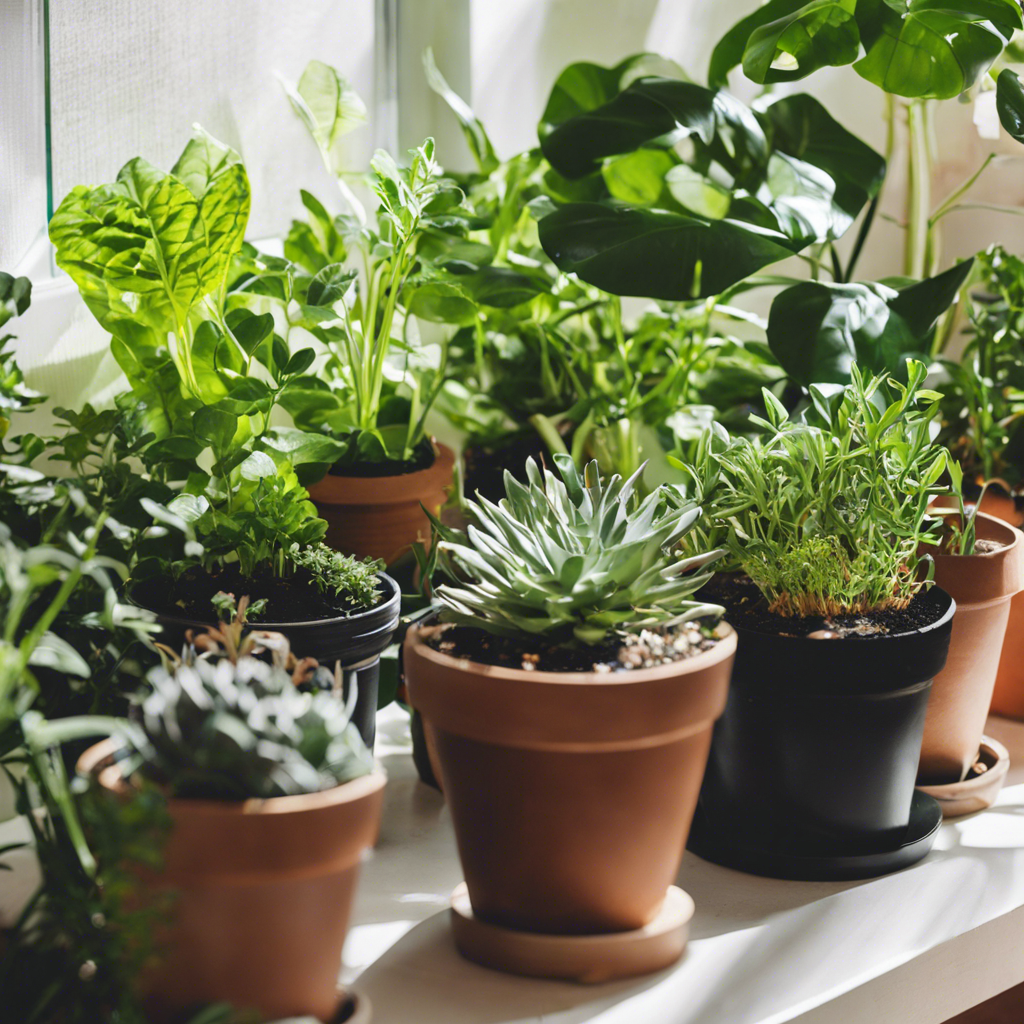Indoor gardening is a rewarding hobby that can bring beauty and freshness to your living space, and it’s easier to get started than you might think! Even if you don’t have a natural green thumb, with the right knowledge and tools, anyone can become a successful indoor gardener. So, if you’re ready to add some greenery to your home and improve your air quality at the same time, here’s a step-by-step guide to help you get started on your first indoor garden.
First, assess the lighting in your home. All plants need light to photosynthesize and grow, so choose a bright spot near a window that receives ample sunlight. East- or west-facing windows are ideal, as they provide moderate levels of light without the intense heat of direct sun, which can scorch leaves. If your home doesn’t get much natural light, don’t worry – many plants can thrive under artificial grow lights, which can be purchased at garden supply stores or online.
Next, consider the temperature and humidity levels in your home. Most houseplants prefer temperatures between 65-75°F (18-24°C) during the day and slightly cooler temperatures at night. Avoid placing plants near heat vents or drafts, as extreme temperature fluctuations can stress them. Grouping plants together can also help raise humidity levels and create a more favorable environment, especially for tropical varieties.
Now, it’s time to choose your plants! For beginners, it’s best to select varieties that are easy to care for and adaptable to varying conditions. Pothos, spider plants, snake plants, and peace lilies are all great options that are known for their tolerance and resilience. When choosing plants, consider their mature size and select containers that are appropriately sized, allowing for adequate root growth.
Once you’ve selected your plants, it’s important to prepare your containers and soil. Ensure pots have drainage holes to prevent water logging, and use a well-draining potting mix specifically formulated for indoor plants. When transplanting, gently loosen the root ball and position the plant so that the top of the root ball is slightly below the rim of the pot, allowing for easier watering.
Water your plants regularly, but be careful not to overwater. Allow the top inch or two of soil to dry out between waterings, and adjust your watering schedule according to the season and your home’s humidity levels. Also, remember to fertilize your plants periodically, following the instructions on an all-purpose fertilizer, to provide them with the nutrients they need to thrive.
One of the most important care tips for indoor plants is to regularly check for pests and diseases. Inspect your plants’ leaves, stems, and soil for any signs of infestation or infection. Common pests include mealybugs, spider mites, and aphids, while common diseases include root rot, leaf spot, and mold. Early detection is key to treating and preventing the spread to other plants.
Pruning your indoor plants is an important step to encourage growth and maintain their shape and size. Remove any dead, dying, or diseased leaves and trim back leggy growth to promote fullness. For vining plants, provide a trellis or stake to guide their growth and give them support. Not only does pruning improve the appearance of your plants, but it also helps redirect energy to healthier parts, promoting overall health and vitality.
Lastly, repotting your plants is necessary as they outgrow their current containers. Over time, plants become root-bound, leading to restricted growth and reduced health. Repotting provides an opportunity to refresh the soil, address root issues, and select a larger container that accommodates future growth. Spring is generally the best time to repot, as it’s the start of the active growing season for most plants.
Now that you’ve laid the foundation for your indoor garden, continue to learn about the specific needs of each plant and enjoy the process of caring for them. Remember that every plant is unique, and with time, you’ll gain a deeper understanding of their individual requirements for light, water, and fertilizer. Happy gardening!
Don’t forget to share your new indoor garden with your friends and family, and encourage them to bring the outdoors in, too! There are so many benefits to having an indoor garden, from improving air quality to boosting your mood. Gardening is also a great way to de-stress and connect with nature, so get growing!
